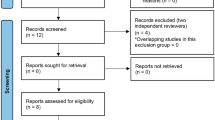Abstract
Objective
The determination of 20S proteasome concentration in the blood plasma of children with appendicitis and its correlation with CRP.
Design and setting
Thirty-one children with acute appendicitis, were randomly included into the study (age 5 years up to 17 years, mean age 11.5 + 1 years).
Participants
There were 17 girls and 14 boys. Eighteen healthy, age-matched subjects, admitted for planned surgeries served as controls. Exclusion criteria were: severe preexisting infections, immunological or cardiovascular diseases that required long-term medication, and complicated cases of appendicitis with perforation of appendix and/or peritonitis.
Main outcome measures
The 20S proteasome concentrations in the blood plasma of patients with acute appendicitis were highest before the surgery and were above the range of concentrations measured in controls, and the difference was statistically significant.
Results
The 20S proteasome concentration measured 24 and 72 h after the operation, slowly decreased over time, and still did not reach the normal range, when compared with the concentration measured in controls (p < 0.05).
Conclusions
20S proteasome concentration may reflect the metabolic response to acute state inflammation, and the process of gradual ebbing of the inflammation. The method of operation—classic open appendectomy, or laparoscopic appendectomy, does not influence the general trend in 20S proteasome concentration.




Similar content being viewed by others
References
Brackeva B, De Punt V, Kramer G, Costa O, Verhaeghen K, Stangé G, Sadones J, Xavier C, Aerts JM, Gorus FK, Martens GA (2015) Potential of UCHL1 as biomarker for destruction of pancreatic beta cells. J Proteom 117:156–167
Wilson CL, Murphy LB, Leslie J, Kendrick S, French J, Fox CR, Sheerin NS, Fisher A, Robinson JH, Tiniakos DG, Gray DA, Oakley F, Mann DA (2015) Ubiquitin C-terminal hydrolase 1: a novel functional marker for liver myofibroblasts and a therapeutic target in chronic liver disease. J Hepatol 63(6):1421–1428
Hussain S, Bedekovics T, Chesi M, Bergsagel PL, Galardy PJ (2015) UCHL1 is a biomarker of aggressive multiple myeloma required for disease progression. Oncotarget 6(38):40704–40718
Jin Y, Zhang W, Xu J, Wang H, Zhang Z, Chu C, Liu X, Zou Q (2015) UCH-L1 involved in regulating the degradation of EGFR and promoting malignant properties in drug-resistant breast cancer. Int J Clin Exp Pathol 8(10):12500–12508
Ito WD, Lund N, Zhang Z, Buck F, Lellek H, Horst A, Machens HG, Schunkert H, Schaper W, Meinertz T (2015) Activation of cell surface bound 20S proteasome inhibits vascular cell growth and arteriogenesis. Biomed Res Int 2015:719316
Hochstrasser M (1996) Ubiquitin-dependent protein degradation. Ann Rev Genet 30:405–439
Yu J, Tao Q, Cheung KF, Jin H, Poon FF, Wang X et al (2008) Epigenetic identification of Ubiquitin carboxyl-terminal hydrolase L1 as a functional tumor suppressor and biomarker for hepatocellular car-cinoma and other digestive tumors. Hepatology 48(2):508–518
Hussain S, Foreman O, Perkins SL, Witzig TE, Miles RR, Van Deursen J et al (2010) The de-ubiquitinase UCH-L1 is an oncogene that drives the development of lymphoma in vivo by deregulating PHLP P1 and Akt signaling. Leukemia 24(9):1641–1655
Dieudé M, Bell C, Turgeon J, Beillevaire D, Pomerleau L, Yang B et al (2015) The 20S proteasome core, active within apoptotic exosome-like vesicles, induces autoantibody production and accelerates rejection. Sci Transl Med 7(318):318
Majetschak M, Perez M, Sorell LT, Lam J, Maldonado ME, Hoffman RW (2008) Circulating 20S proteasome levels in patients with mixed connective tissue disease and systemic lupus erythematosus. Clin Vaccine Immunol 15:1489–1493
Henry L, Lavabre-Bertrand T, Douche T, Uttenweiler-Joseph S, Fabbro-Peray P, Monsarrat B et al (2010) Diagnostic value and prognostic significance of plasmatic proteasome level in patients with melanoma. Exp Dermatol 19:1054–1059
Jakob C, Egerer K, Liebisch P, Türkmen S, Zavrski I, Kuckelkorn U et al (2007) Circulating proteasome levels are an independent prognostic factor for survival in multiple myeloma. Blood 109:2100–2105
Matuszczak E, Tylicka M, Debek W, Hermanowicz A, Ostrowska H (2015) The comparison of C-proteasome activity in the plasma of children after burn injury, mild head injury and blunt abdominal trauma. Adv Med Sci 60(2):253–258
Tylicka M, Matuszczak E, Dębek W, Hermanowicz A, Ostrowska H (2014) Circulating proteasome activity following mild head injury in children. Childs Nerv Syst 30(7):1191–1196
Matuszczak E, Tylicka M, Dębek W, Hermanowicz A, Ostrowska H (2014) Correlation between circulating proteasome activity, total protein and c-reactive protein levels following burn in children. Burns 40(5):842–847
Sixt SU, Dahlmann B (2008) Extracellular, circulating proteasomes and ubiquitin—incidence and relevance. Biochim Biophys Acta 1782:817–823
Sankiewicz A, Laudański P, Romanowicz L, Hermanowicz A, Roszkowska-Jakimiec W, Debek W et al (2015) Development of surface plasmon resonance imaging biosensors for detection of ubiquitin carboxyl-terminal hydrolase L1. Anal Biochem 469:4–11
Gorodkiewicz E, Ostrowska H, Sankiewicz A (2011) SPR imaging biosensor for the 20S proteasome: sensor development and application to measurement of proteasomes in human blood plasma. Mikrochim Acta 175:177–184
Gorodkiewicz E (2009) Surface plasmon resonance imaging sensor for cathepsin determination based in immobilized cystatin. Protein Pept Lett 16:1379–1385
Johnsson B, Lofas S, Lindquist G (1991) Immobilization of proteins to a carboxymethyldextran-modified gold surface for biospecific interaction analysis in surface plasmon resonance sensors. Anal Biochem 198:268–277
Gorodkiewicz E, Sankiewicz A, Laudański P (2014) Surface plasmon resonance imaging biosensors for aromatase based on a potent inhibitor and a specific antibody: sensor development and application for biological material. Cent Eur J Chem 12:557–567
Flück K, Fandrey J (2016) Oxygen sensing in intestinal mucosal inflammation. Pflugers Arch 468(1):77–84
Xu J, Zhou L, Ji L, Chen F, Fortmann K, Zhang K et al (2016) The REGγ-proteasome forms a regulatory circuit with IκBɛ and NFκB in experimental colitis. Nat Commun 7:10761
Mantovani A et al (2008) Cancer-related inflammation. Nature 454:436–444
Gilmore TD (2006) Introduction to NF-kappaB: players, pathways, perspectives. Oncogene 25(51):6680–6684
Author information
Authors and Affiliations
Corresponding author
Rights and permissions
About this article
Cite this article
Matuszczak, E., Tylicka, M., Dębek, W. et al. Concentration of Proteasome in the Blood Plasma of Children with Acute Appendicitis, Before and After Surgery, and Its Correlation with CRP. World J Surg 42, 2259–2264 (2018). https://doi.org/10.1007/s00268-017-4407-7
Published:
Issue Date:
DOI: https://doi.org/10.1007/s00268-017-4407-7




